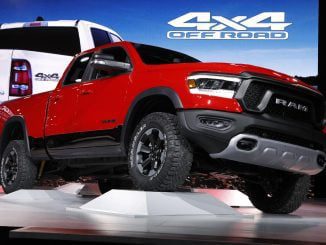
DETROIT — General Motors posted a healthy $2.8 billion second-quarter profit Wednesday, but its cautious outlook for the rest of the year spooked investors.
The Detroit automaker made the strong profit despite a global shortage of computer chips that have forced it and other companies to temporarily close factories.
While GM raised its outlook for the year, it also cautioned about high commodity prices and lower production due to the chip shortage, and it warned that the highly contagious delta variant of the coronavirus could hamper its supply chain.
The cautious tone rattled investors, who pushed GM shares down almost 9% Wednesday.
Chief Financial Officer Paul Jacobson predicted that GM would produce 100,000 fewer vehicles in the second half of the year compared with the first, even as other companies forecast improvements in semiconductor production. GM said it managed the shortage well and was able to divert scarce chips to factories that make higher profit pickup trucks and large SUVs.
But Edward Jones Industrials analyst Jeff Windau said investors are building some uncertainty into GM’s stock price after the company forecast $3.5 billion to $4.5 billion worth of increased costs in the back half of the year.
“Obviously there’s some shutdowns, and there’s just concerns with how things are evolving,” Windau said. “Expectations have been rising over the last couple of months. This just kind of comes back and potentially resets the bar a little bit.”
On Tuesday, GM announced that pickup truck plants in Flint, Michigan; Silao, Mexico; and Fort Wayne, Indiana; would be closed next week due to the chip shortage. Production is to resume on Aug. 16. But factories in Tennessee and Mexico that make cars and SUVs that were down since July 19 will come back on line Monday.
Even with the caution, GM told the same story as competitors Ford, Stellantis and others reporting strong profits, saying that high prices and healthy demand for expensive pickup trucks and luxury SUVs overcame inventory shortages.
GM boosted its net income guidance for the full year to $7.7 billion and $9.2 billion, and pretax earnings to a range of $11.5 billion to $13.5 billion from $10 billion to $11 billion.
Executives said Wednesday that they expect tight inventory and high prices to continue through the year as the chip shortage lingers into 2022.
Yet CEO Mary Barra warned that the fast-spreading coronavirus delta variant could cause supply chain problems down the road. The company also has plans to handle future shortages by collaborating with semiconductor manufacturers, she said.
“There is still more variability than I’d like to see,” Barra said. “This is something we will work our way out of, and it won’t be an issue as we move forward over a little bit longer period of time.”
The average GM vehicle sold for nearly $44,000 from April through June, the company said, and it was up nearly $3,000 over that in July.
Jacobson said the high prices at present come from high demand for more higher priced trucks and SUVs with a “very rich mix” of options being purchased by consumers. Barra said the prices will subside a bit as inventory grows, but she still expects them to be strong as GM adds electric vehicles to its lineup.
Excluding one-time items, GM made $1.97 per share, beating Wall Street estimates of $1.82. Revenue was $34.2 billion, which also exceeded analysts’ estimates of $29.92 billion, according to FactSet.
The profit would have been $1.3 billion higher if not for recall costs, including $800 million to fix a battery fire problem in older Chevrolet Bolt electric vehicles, the company said.
Barra said GM had a little more than 200,000 vehicles in stock, enough to supply 25 days of consumer demand. That’s far short of the normal inventory. Automakers like to have around a 60-day supply on dealer lots for customers to pick from.
On Tuesday, a task force of Detroit auto companies and the United Auto Workers announced that factory workers would be required to wear masks again due to the delta variant. Asked if GM would require employees to be vaccinated, Barra hinted that may be coming. “We are evaluating multiple choices that we can make, but our intent is always to keep our employees and our customers safe,” she said.
GM said it produced about 200,000 more vehicles in the first half of the year than it did during the same period in 2020, largely because factories were shut down last year as the pandemic grew.
Yet the consulting firm LMC Automotive estimated that GM production from April through June was down 38% from the same quarter in 2019, the last comparable quarter of normal production.
Jacobson said the semiconductor shortage should start to ease in the fourth quarter, so fourth-quarter production will be higher than the third.
“You can see light at the end of the tunnel as we’re getting toward that,” he said.
Barra also announced two new electric vehicles coming as part of GM’s plan to introduce more than 30 globally by 2025. She said the Chevrolet brand will roll out a full-size electric cargo van, and GM also will sell a medium-duty electric or hydrogen fuel cell truck platform that can be used for service and utility vehicles such as school buses, bucket trucks and wreckers.



